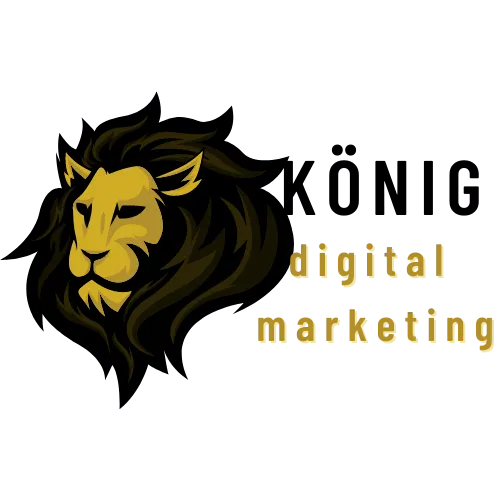

Contact US
Thank you for considering Konig Digital for your digital marketing needs. We are here to answer any questions you may have and help you get started on your journey towards achieving your online goals.
70% of customers prefer to message with businesses
- The Washington Post
You can contact us through any of the following methods:
Email: [email protected]
Phone/Text: +1 (240) 202-2609
Address: 7903 Cole Ave, Takoma Park, MD 20912, United States
Alternatively, you can fill out the contact form and one of our representatives will get back to you as soon as possible:
We look forward to hearing from you and helping you achieve success online.
Transform Your Business with Smart Marketing Automation Software...

Why 10x Is Easier: Ditch 2x Efforts for Exponential Wins
Ever feel like you're grinding away at your B2B business, tweaking processes here and there, only to see marginal gains that barely keep pace with the competition? You're not alone. Many entrepreneurs chase that elusive 2x growth, doubling revenue or leads through sheer effort, but end up exhausted and stuck. What if I told you that aiming for 10x, a tenfold leap, is actually easier and more sustainable? This isn't hype, it's the core message from Dan Sullivan and Dr. Benjamin Hardy's book, 10x Is Easier Than 2x, a game-changer for ambitious founders.
As a strategist, I've witnessed countless B2B leaders in fields like manufacturing and tech services apply these ideas to shatter plateaus. Hardy and Sullivan argue that exponential wins come not from working harder, but from rethinking everything, eliminating the unnecessary, and focusing on what truly scales. In this piece, we'll explore overcoming incremental thinking, the pitfalls it creates, and a practical path to those 10x breakthroughs. We'll tie it all to real-world tools like AI lead generation for scaling, showing how tech amplifies these principles. Get ready for an eye-opening ride that could redefine your growth trajectory.
The Sneaky Saboteur: Getting Stuck in Incremental Thinking
Let's zero in on the problem that's quietly derailing so many B2B ventures, overcoming incremental thinking. You know the drill, you're constantly optimizing, A/B testing your emails, refining your ad copy by 10%, or adding one more follow-up to your sales sequence. It feels productive, like you're making progress, but deep down, it's a hamster wheel. Hardy and Sullivan describe this as "2x thinking," where you double down on existing methods without questioning if they're the right ones.
In B2B sales, this manifests as manually curating lead lists, relying on cold outreach that yields low conversion rates, or scaling teams linearly as deals grow. According to recent 2025 stats, 44% of companies now use marketing automation for leads, yet many still cling to incremental tweaks, missing the bigger picture. The challenge? This mindset assumes resources are finite, leading you to hoard time and effort on familiar tasks instead of innovating.
Think about your daily grind. If you're a founder in medical tech, for example, you might spend hours qualifying prospects via spreadsheets, convinced that small improvements will add up. But Hardy and Sullivan point out that 80% of your activities are non-essential, dragging you down without propelling you forward. Overcoming incremental thinking requires recognizing that these habits, while comfortable, cap your potential at mediocrity. Without a shift, you're not building exponential wins, you're just surviving the status quo.
This isn't about laziness, it's about misdirected energy. In a world where AI lead generation for scaling can automate prospecting and predict intent, sticking to manual methods is like using a typewriter in the age of word processors. The problem deepens when you factor in market demands, buyers expect personalized, timely engagement, yet incremental approaches leave you reactive, not proactive.
The Domino Effect: Risks of Ignoring Incremental Traps
Now, let's amplify the stakes. What happens when you don't tackle overcoming incremental thinking? The consequences aren't just minor setbacks, they're a cascade that can cripple your business and personal life, creating urgency to act now.
First, the burnout factor. Hardy and Sullivan warn that 2x efforts lead to exhaustion because you're broadening your scope without depth, juggling more without mastering less. In B2B, this means longer sales cycles, with McKinsey noting that AI could reshape them dramatically, yet laggards face 20-30% inefficiencies. Founders report skyrocketing stress, with teams churning at rates up to 25% higher in stagnant environments, per industry reports.
Financially, the hit is brutal. Sticking to incrementalism means missed exponential wins, like the 50% lead increase companies see with AI adoption. In 2025, with 79% of B2B marketers using AI tools, ignoring this leaves you vulnerable to competitors who scale pipelines effortlessly. Imagine forfeiting $1M in revenue because your leads dry up while rivals use predictive analytics to snag high-intent buyers first.
Then there's the opportunity cost. Hardy and Sullivan emphasize that 10x thinking frees up freedoms like time and purpose, but incremental traps lock you in "factory time," endless operational drudgery. Personally, this erodes work-life balance, with entrepreneurs averaging just a handful of truly free days yearly. Business-wise, it stifles innovation, as you're too busy tweaking to envision bold moves like AI-driven personalization that could 10x conversions.
The risk? In a volatile 2025 market, where budget cuts and cookieless tracking challenge lead gen, per Inbox Insight, clinging to 2x means obsolescence. Your growth flatlines, talent flees, and that dream of exponential wins fades into "what if." Urgency builds because the gap widens daily, act now or watch others claim the future.
Your Roadmap to 10x: A Framework for Exponential Wins
Good news, overcoming incremental thinking isn't as daunting as it seems. Hardy and Sullivan lay out a clear path in their book, showing that 10x is easier because it simplifies, focusing on depth over breadth. We'll adapt their lessons into a four-step framework tailored for B2B entrepreneurs, delivering immediate value through actionable steps. This approach integrates AI lead generation for scaling, turning theory into results.
Step 1: Audit Your 80/20 for Radical Elimination
Start by identifying what to ditch. Hardy and Sullivan stress that only 20% of efforts drive 80% of results, so map your activities. In sales, list tasks like manual research or unqualified calls.
Action: Spend an hour categorizing. Eliminate or automate the 80%, like using AI for lead scoring to focus on high-potential prospects. This frees time for strategic plays, setting the stage for exponential wins.
Step 2: Redefine Your Identity for 10x Thinking
Growth starts inside. The authors argue 10x requires embodying a new self, not just new habits. Shift from "hustler" to "visionary scaler."
Practical: Write a "10x manifesto" declaring, "I leverage AI lead generation for scaling to achieve effortless exponential wins." Read it daily. This mindset pivot, as Hardy and Sullivan describe, makes bold decisions natural.
Step 3: Expand Your Four Freedoms
Sullivan's freedoms, time, money, relationship, purpose, are key to 10x. Build them systematically.
For time, block "free days" for creativity, automating routines with AI. Money freedoms come from scalable revenue, like AI-optimized pipelines boosting leads by 50%. Nurture relationships by delegating, and align purpose with impact-driven goals. Action: Schedule one freedom-expanding task weekly, like integrating AI for intent data.
Step 4: Filter Everything Through Your 10x Future
Make 10x your lens. Hardy and Sullivan say evaluate opportunities by asking, "Does this enable exponential wins?"
In practice, vet tools and strategies accordingly. If AI lead generation for scaling cuts cycles and multiplies output, it's a yes. Review quarterly, pruning what doesn't align. This iterative filter ensures sustained leaps.
Apply this framework, and watch incremental thinking dissolve into 10x momentum. It's simpler than doubling efforts, as the book proves.
Bringing It Home: Leap to Your Exponential Future
We've unpacked the incremental trap, its heavy tolls, and a Hardy and Sullivan-inspired framework for exponential wins. Overcoming incremental thinking isn't optional in 2025, it's essential for thriving.
At Konig Digital, we put these principles into action with services like our AI-powered lead gen, which automates the 80% to unlock your 20% genius. It's a seamless fit, helping you scale without the grind.
Shift from scarcity to abundance mindset. Discover strategies for time and money freedoms, boosted by AI lead generation for scaling B2B growth - read our recent article here...
Konig Digital, LLC
Address: 7903 Cole Ave, Takoma Park, MD 20912, United States
Email: [email protected]
Phone No: +1 (240) 202-2609
Hours:
Weekdays – 8 AM to 5 PM
Weekends- OFF

2025 All rights Reserved | Sitemap







